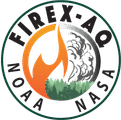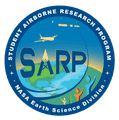The Airborne Cavity Enhanced Spectrometer (ACES) is a two-channel spectrometer designed for aircraft measurements of glyoxal (CHOCHO), methylglyoxal (CH3COCHO), nitrous acid (HONO), nitrogen dioxide (NO2), and water vapor (H2O). ACES provides high-sensitivity measurements of trace gases and aerosols by passing light through an optical cavity equipped with a grating spectrometer and a charge-coupled device. It operates across two wavelength ranges (361-389 nm and 438-468 nm) and offers high precision and rapid measurement frequency.

Instrument Details
- Spectrometer/Radiometer
- Earth Science > Atmosphere > Atmospheric Chemistry > Trace Gases/trace SpeciesEarth Science > Atmosphere > Atmospheric ChemistryEarth Science > Atmosphere > Atmospheric Water Vapor > Water Vapor Indicators > Water VaporEarth Science > Atmosphere > Atmospheric Chemistry > Nitrogen CompoundsEarth Science > Atmosphere > Atmospheric Chemistry > Nitrogen Compounds > Nitrogen Dioxide
- Troposphere
- 10 s
- Point
- 771-830 THz, 641-684 THz
- Currently unavailble
Carrie Womack, Rebecca Washenfelder, Mike Robinson, Steve Brown
Carrie Womack, Rebecca Washenfelder, Mike Robinson, Steve Brown
Currently unavailable
National Natural Science Foundation of China, Strategic Priority Research Program of the Chinese Academy of Sciences, NSF, NOAA
 Douglas DC-8 45 Campaigns · 182 Instruments |  Active Sensing of CO2 Emissions over Nights, Days, and Seasons 2010—2017 United States, Canada 6 Deployments · 5 Data Products
 Korean United States - Air Quality 2016 South Korean peninsula, including surrounding seas 1 Deployment · 20 Data Products
 Fire Influence on Regional to Global Environments and Air Quality 2019 Northwestern and Southeastern US 1 Deployment · 27 Data Products
 Airborne and Satellite Investigation of Asian Air Quality 2024 East and Southeast Asia, Philippines, South Korea, Thailand 1 Deployment · 8 Data Products
 Student Airborne Research Program 2009—2026 Southern California, Virginia Ongoing 19 Deployments · 25 Data Products
 Atmospheric Emissions and Reactions Observed from Megacities to Marine Areas 2023 Urban regions across the western and eastern United States 1 Deployment · 0 Data Products
|
Filter data products from this instrument by specific campaigns, platforms, or formats.